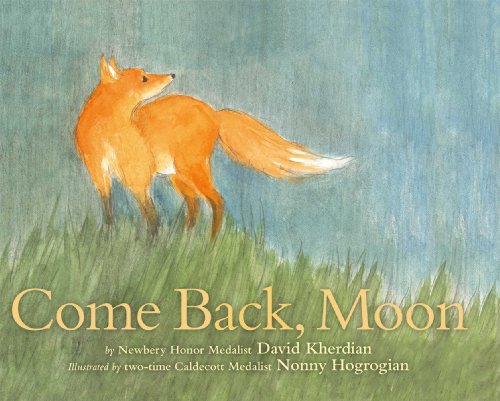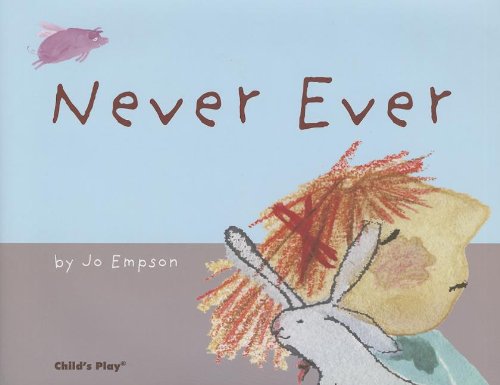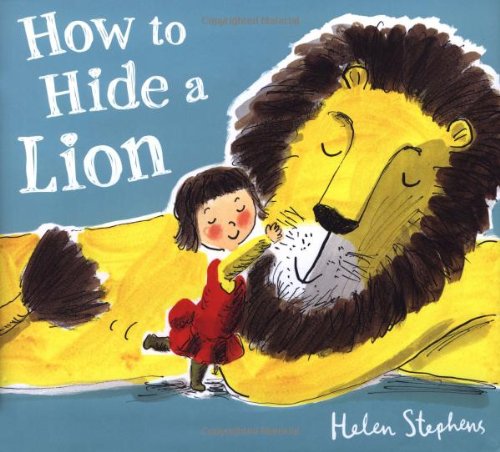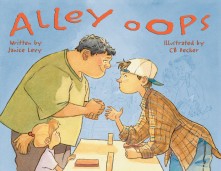 |
| Is It Important to Teach American History? |
 |
| Is It Important to Teach American History? |
Tuxedo’s Tales is packed with sweet teachable moments and has a strong emphasis on friendship. This book offers the kind of wisdom kids can use on a daily base.
Add a Comment
 |
| May the Fourth be with You... |
 |
| Where the Magic Happens... |
In children’s book author Steven Schoenfeld’s Can You Buy Me the Wind?, children and parents alike are treated to a rhyming picture book that seeks to instill a solid set of values.
Add a Comment
In June, (now former) Education Secretary Michael Gove announced that all primary and secondary schools should promote “British values”. David Cameron said that the plans for values education are likely to have the “overwhelming support” of citizens throughout the UK. Cameron defined these values as “freedom, tolerance, respect for the rule of law, belief in personal and social responsibility and respect for British institutions”. At root, such a policy gets at the emotional conditioning of children. To adhere to a certain ideological conceptualization of “freedom,” to feel “tolerant,” or to be “respectful” (whether of parents, teachers, authorities or institutions), is to act according to implicit feelings of rightness.
Values are never just abstract ideas, but are expressed and experienced through emotions. And they are not ideologically neutral. To stress the education of British values is to put a form of emotional education on the agenda. Though many commentators have pointed out that the broad outlines of such an education already exist in schools, the fear of “extremism”, of the promotion of the “wrong” sort of values, has triggered a vigorous debate. What has largely gone unrecognized in this debate, however, is that it is emphatically not new.
In the nineteenth and early twentieth centuries, politicians and educationalists promoted a new education based on character training and the emotions, precisely to build British citizens who would respect and uphold British institutions. This brand of education was to be accomplished at school, but also at home, and in religious and youth organizations.
Herbert Fisher, the President of the Board of Education who spearheaded the Education Act of 1918, argued that the masses should be educated “to stimulate civic spirit, to promote general culture … and to diffuse a steadier judgement and a better informed opinion through the whole body of the community.” Other educational commentators broadly agreed with this mission. Frederick Gould, a former Board School teacher and author of many books on education argued that “The community cannot afford to let the young people pass out with a merely vague notion that they ought to be good; it must frame its teaching with a decisive and clear vision for family responsibilities, civic and political duties”.

Michael Gove, by Paul Clarke, CC-BY-3.0 via Wikimedia Commons.
Civic duties – the civic spirit – were to be taught to the extent that they would become ingrained, implicit, felt. This was to be primarily a moral education. Educators stressed character training, linking moral education to British imperialism or nationalism in an unashamedly patriotic spirit. Education reform was to improve future citizens’ productivity and develop national character traits.
Like Gould, educator John Haden Badley stressed the need to teach active citizenship and service. Education on these lines would provide “a deeper understanding of the human values that give to life its real worth”, cultivating and maximizing the potential of a “superior” Britishness. Meanwhile, in a speech in Manchester in 1917, Fisher argued that “the whole future of our race and of our position in the world depends upon the wisdom of the arrangements which we make for education.” He observed, in language strikingly familiar to contemporary political rhetoric, that “we are apt to find that the wrong things are being taught by the wrong people in the wrong way.”
But even in 1917 the rhetoric was clichéd. A generation of commentators before Fisher argued that the civic shortfalls in mass formal education could be fixed by informal education in youth groups and religious organizations and through improved reading matter. Much juvenile and family literature, whether motivated politically or religiously, stressed emotional socialization, especially in the building of morality and character, as critical for national cohesion.
The trouble with visions of national cohesion, as the last century and a half of educational debate bears out, is the difficulty in getting any two parties to agree what that vision looks like. At the turn of the twentieth century all agreed that children mattered. How they were to be educated was important not just to individual children and their families, but equally importantly, to the community and the nation.
Yet some reformers had patriotic aims, others religious; some civic, some imperial; some conservative, others socialist. Many combined some or all of these aims. All, whether explicitly stated or not, wanted to train, instrumentalize and harness children’s emotions. Children’s reading matter, the stories they were told, and the lessons they heard were known to be powerful forces in cultivating the emotions. Hence the high stakes, then and now, on the narratives supplied to children.
Michael Gove, in common with his Victorian forebears, turns to the “great heroes of history” to serve as models of emulation. Back in the early 1900s, Gould thought history “the most vital of all studies for inspiration to conduct.” The study of history is certainly no stranger to being manipulated for didactic ends in order to impart “British values.”
While Gove is only the latest in a long line to link British history, British values and education, there are surely lessons to be learnt from past attempts and past failures to implement this strategy. A generation of boys and young men at the turn of the twentieth century had grown up learning the positive value of patriotic service. In this memorial year, marking a century since the outbreak of the First World War, it seems appropriate to reflect on what values we might want to instil in the young. What feelings do we want them to learn?
Stephanie Olsen is based at the history department, McGill University (Montreal) and the Max Planck Institute for Human Development, Center for the History of Emotions (Berlin). She was previously postdoctoral fellow at the Minda de Gunzburg Center for European Studies at Harvard University. The co-author of Learning How to Feel: Children’s Literature and the History of Emotional Socialization, c. 1870-1970 she is currently working on children’s education and the cultivation of hope in the First World War.
The post Are schools teaching British values? appeared first on OUPblog.
Some library books I liked that helpfully fit into a theme of hide and seek. But they all also have classroom or home use for demonstrating values like working together, gratitude, and acceptance without being heavy-handed.
Come Back, Moon
by David Kherdian, illustrated by Nonny Hogrogian
Beach Lane Books, 2013
When Bear is bothered by the light of moon and can’t sleep, he steals the moon. Under the clever leadership of fox, the forest animals work together to get it back. Simple text makes this ideal for younger storytimes or even as a beginning reader book. The soft, watercolor illustrations bring to life a serene forest scene, with special acknowledgement to the orange fox — who looks so darn cute and cuddly. The book would also be useful for themes of working together and conflict resolution.
Never Ever
by Jo Empson
Child's Play, 2012
A girl complains that nothing exciting ever happens, yet as she walks with her stuffed bunny a world of excitement is going on around her. Flying pigs, a flower-loving gorilla, and a brave lion join her on her walk — right into a dragon’s mouth! But she continues to be unimpressed, even with one more surprise in store. The illustrations in watercolor and pencil depict a world both gentle — with the soft blues of the girl’s dress and pink of the pigs — and lively in the yellow flowers and bright green dragon. Simple in words and concept, but high in imagination, this book is an invitation to play and think about what is right in front of us.
How to Hide a Lion
by Helen Stephens
Henry Holt, 2013
The book sets it up nicely: “One hot day, a lion strolled into town to buy a hat. But the townspeople were scared of lions, so the lion ran away.” A little girl find the lion, and decides to help him out with a bandage, a comb-out, and mostly by hiding him. But her mom finds him, screams, and the lion runs away. Hiding himself in town, he finds an opportunity to save the day and is accepted by the townspeople. Fun story that has an actual plot line to it. The bright yellow lion is visually captivating, and the relationship with the girl is adorable. The book would also be a good example for not judging someone too quickly.
Recently, I was discussing my academic interest with an acquaintance from my elementary school days. On revealing that I have researched and written about the Rastafarian movement, I was greeted with a look of incredulity. He followed this look with a question: “How has Rastafari assisted anyone to progress in life?” My friend assured me he was aware that prominent and accomplished Rastas exist in Jamaica, however he was convinced that Rastafari did not contribute to the social and economic mobility of most of its adherents. Sensing that my friend was espousing a notion of progress based on rising social status and increasing economic resources — reflecting his own journey from a peasant farming family to an elementary school teacher to a highly regarded principal of a number of schools to an educational officer at present — I pointed out that Rastafari rejects this conventional notion of progress, especially when it is for a few at the exclusion of the many. Pointing out that I had no understanding of Rastafari until I started researching it, I left hoping that next time he engages in a conversation on Rastafari, he will do so with greater understanding and appreciation.
Unfortunately, my acquaintance’s attitude towards Rastafari is widely shared by those who judge progress and personal worth by social mobility and increasing material resources within a Western cultural framework. Conversely, Rastafari has articulated a trenchant critique of Western values and institutions, asserting that they are based on exploitation and oppression of both humans and the environment. Western values and institutions have sown seeds of discord, distrust, and conflict that translate into social disharmony and all the social ills that plague contemporary societies. The rapacious exploitation of natural resources in pursuit of profit have violated sound ecological principles and will ultimately trigger an ecological backlash (are we already experiencing this in changing weather patterns?). In this respect, Rastafari is an implicit call for us to examine the foundation on which our political, economic, and cultural institutions and values are constructed. Are they designed to cater to the interest of the whole human family or the interest of those who monopolize and manipulate power? Are they informed by a desire to live in harmony with other humans and nature or by a desire to dominate both?
But Rastafari is much more than a critique of Western society; it is a fashioning of an identity grounded in a sense of the human relationship to the Divine and to the African heritage of most of its adherents. Thus for Rastas, the Divine is not just some transcendent, ethereal being, but an essential essence in all humans and a cosmic presence that pervades the universe. To be Rasta is to be awakened to one’s innate divine essence and to strive to live one’s life in harmony with the divine principles that govern the world, instead of living like “baldheads” (non-Rastas) who are sometimes driven to excess in their pursuit of ego-satisfaction. On a more cultural level, Rastafari seeks to cultivate for its adherents an identity and a lifestyle based on a re-appropriation on an African past. Rejecting the slave and post-slavery identity foisted upon them by colonial powers, early Rastas and their successors turned to their African heritage to reconstitute their cultural selves. Despite the derogation of Africa and the denigration of Africans in colonial discourse, Rastas proudly affirm themselves as Africans and posit that an African sense of spirituality that embraces communality and living in harmony with the forces of nature is not only in line with divine principles, but also makes for a more harmonious relationship among humans and a more sustainable future for the earth.
Many of us approach Rastafari from a sense of curiosity inspired by the dramatic imagery that dreadlocks present, rumours we have heard about the copious use of ganja (marijuana) by its adherents, or the realization that the enchanting rhythms and conscious lyrics of reggae are Rasta-inspired. However, a closer look will make us realize that Rastafari presents us with a perspective that can help us ask questions about the mainstream values and institutions of Western society and beyond. Do these values and institutions promote freedom, justice, harmony, opportunity, and sustainability? Long before the Arab Spring and the Occupy Movement, Rastafari has been criticizing the “downpression,” inequities, and unsustainability of the political and economic structures of the world. How about how we regard our human selves? Are we just cogs in the wheel of an economic machine? Or do we have intrinsic value that is enhanced by living in harmony with other humans and our natural environment? You need not embrace Rastafari to appreciate Marley’s lyrics from “Survival”:
Click here to view the embedded video.
“In this age of technological inhumanity/Scientific atrocity/Atomic misphilosophy/Nuclear misenergy/It’s a world that forces lifelong insecurity.” Part of the liner notes from the album of the same name points the way out of this state of affairs: “But to live as one, equal in the eyes of the Almighty.”Ennis B. Edmonds is Assistant Professor of African-American Religions and American Religions at Kenyon College, Ohio. His areas of expertise are African Diaspora Religions, Religion in America, and Sociology of Religion. His research has focused primarily on Rastafari, leading to Rastafari: From Outcasts to Culture Bearers and Rastafari: A Very Short Introduction.
The Very Short Introductions (VSI) series combines a small format with authoritative analysis and big ideas for hundreds of topic areas. Written by our expert authors, these books can change the way you think about the things that interest you and are the perfect introduction to subjects you previously knew nothing about. Grow your knowledge with OUPblog and the VSI series every Friday and like Very Short Introductions on Facebook.
Subscribe to the OUPblog via email or RSS.
Subscribe to only VSI articles on the OUPblog via email or RSS.
Image credit: Judah Lion, By Weweje [Public domain], via Wikimedia Commons
The post Appreciating the perspective of Rastafari appeared first on OUPblog.
I've started on the castle itself, after lingering over the sky.
 Yes. Janice Levy, author of Alley Oops, is interviewed on online radio and talks about bullying.
Yes. Janice Levy, author of Alley Oops, is interviewed on online radio and talks about bullying.
This week is Anti-Bullying Week in the United Kingdom. The motto for this year’s week-long campaign is “Taking Action Together.”
Just in time for Anti-Bullying Week, an annual U.K. event aimed at raising awareness and preventing harassment, a new study reveals that 43 percent of Britain’s 11- to 16-year-olds say they’ve witnessed another student being bullied on the way to school or coming home, with 1 in 10 saying they’ve been victims of bullying themselves this past year. This kind of intimidation could potentially affect as many as 370,000 U.K. kids in this age group, the study says.
–from The School Library Journal. Read the rest of the article here.
Similar statistics have been shown in the US and other countries. Flashlight Press is a devoted to spreading the message that bullying needs to end now, and we believe that education needs to start young. Our books Carla’s Sandwich and Alley Oops contain strong anti-bullying themes and have been selected by the National Center for Youth Issues as Elementary Education Anti-Bullying resources.
Anti-Bullying Week in the UK is a great start, but we believe every week should be anti-bullying week everywhere.
 0 Comments on Taking Action Together as of 1/1/1900
0 Comments on Taking Action Together as of 1/1/1900
We believe that a lot of movies - particularly the more violent ones - are not for little kids. Just a personal feeling that they are not really appropriate - ie. the ratings. Today, Mo came home talking about how he was playing at recess with the boys and they were playing Batman and Star Wars and he had no idea what they were. He played along for awhile, but the jig was soon up. Then, once again - he played by himself. Let me preface this and say - he JUST turned five.
Are we hampering his social development by making him the 'different' kid on the playground? Is his childhood going to be like mine? Amazing at home and terrible in the school yard? What are we to do? We read Roahl Dahl books (dark indeed), do not filter information about death and sickness, but explain it when asked. He watches the news with us, and we tell him the truth. He knows where his food comes from and where babies come from... and yet I feel like maybe, maybe we SHOULD let him watch these movies.
Then, this past weekend, we were at a beautiful wedding at Camp Wanakita. My Tent Sisters were there - fellow wild women of the woods (one was getting married), and my friends little guy - well - he is JUST LIKE mine. They played non-stop, in the sand, in the creek, in the trees. Not one mention of movies or superheroes, they talked bird calls and cool rocks. Too bad he lives all the way in Nelson, BC. They performed their made-up songs on the stage and ran themselves ragged at the party. SO neat to see, Mo has great friends - better than great friends, but this connection is was a rare jewel.
Allan Barsky, JD, MSW, PhD is a Professor of Social Work at Florida Atlantic University and a member of the NASW National Ethics Committee. He is also the author of Ethics and Values in Social
Work: An Integrated Approach for a Comprehensive Curriculum, which offers a series of learning modules that will ensure graduates receive a comprehensive ethics and values education. In the post below Barsky asks how we learn moral courage?
When social workers think of ethics, they often think of the NASW Code of Ethics. The Code of Ethics identifies a list of ethical principles and standards of behavior for professional social workers. It tells us to respect the dignity and worth of all people, to maintain client confidentiality, to promote client self-determination, to maintain high standards of professional competence, and to promote social justice. When ethical guidelines are clear and non-conflicting, they are generally easy to follow. But what happens when social workers know the right way to act – what is ethical – but acting in an ethical manner poses risks to the social worker? Consider a social worker who knows that the executive director is using agency funds for personal benefit, a worker who is aware that a clinical supervisor is acting in a discriminatory manner toward African Americans, or a worker who suspects that key donors to the agency have earned their money through illegal Ponzi schemes? Consider also a social worker who unintentionally breaches the Code of Ethics but is too ashamed to admit it. In such cases, the worker knows that the right thing to do is to confront the unethical behavior or wrongdoing. In practice, workers may do nothing for fear of reprisal. A worker’s fears may include:
• What if I raise the issue and my superiors get angry?
• What if I can’t prove the wrongdoing and people accuse me of being insubordinate, traitorous, or disloyal?
• Am I willing to risk scorn, humiliation, alienation, or even the loss of my job?
On the other hand, if the worker does not confront the wrongdoing, then the worker’s inaction perpetuates the problem.
Knowing what is right does not necessarily mean that workers will do what is right. Often, it takes significant moral courage to do the right thing. Moral courage refers the virtue of having the strength to do what is right in the face of opposition. Moral courage is required to put ethics into action under challenging circumstances (Strom-Gottfried).
So if moral courage is so important, where do we learn it? Certainly, some people learn moral courage from their families and from modeling key people in their formative years. Has anyone heard of a course in moral courage – in primary education, in college, or in any school of social work? I haven’t. If we expect social workers (and indeed all people) to act ethically, shouldn’t we equip them with the skills they need to put ethics into action? Shouldn’t social work education include the development of moral courage?
The question is not simply, “Should we provide education to foster moral courage?” but “What should moral courage education include?” What knowledge and information should we provide, and what types of learning experiences should be used to promote moral courage? How can we ensure that social workers not
i think i finished it, it took me about 12 hours to make the whole drawing, and there even are parts where i now i didn't do ok, or that i could correct, but for a school excersie is already a little too much. thinking of the bunch still ahead waiting to be done...hmmm, i'd better leave this one alone.
The suggestions the other Americans made for improving the school led me to some reflections about time in India.
It began when Sarah responded to the outsiders' plea for a structured daily schedule, regular field trips, additional after-school programs, and so on, by saying, "I cannot ask my teachers to do more. They are already working long hours for reduced salaries. My teachers do what they do for affection, for love, not for money."
Values are different in India. Traditionally, it has been more important to ask after the family of the neighbor or relative you meet on the street than it is to get somewhere on time. Affection, caring, is of greater value than money or time. So, since many people still agree that responding to the need of the moment with love is more valuable than arriving on time or getting work done, the imposition of the Western values of efficiency and hard work is not always effective.
Values are shifting, however, as the Boom proves - young people are rapidly rejecting traditional value systems in favor of current fashion. All those new buildings are rising on schedule and the IT industry is delivering on time.
Nonetheless, I hope the person calling on that cell phone ringing in the temple of the sacred deity is asking about the family of the smiling young woman answering it.
Watching JAWS in the middle of the night
Not that I like sharks or chopped limbs or psychological fear
and how ironic the movie was filmed on Martha's Vineyard
where we are headed tomorrow
Before we head home
With all our limbs intact
The fog blew in the air
like sheets of wind
like ghosts dancing
like thick, slanted bolts of rain
At 2 AM, the sky was lit with white heat and moisture
The only thing missing was a wolf howling at the moon
Scary movie indeed
On this our last evening in Hyannis
Our sunset cruise in the harbor
was cancelled due to heavy fog and wind and tempestuous water
Of all the nights for the weather to play havoc with our plans
this was not the night I would have chosen
We scrubbed our sailing plans
and drove out to Provincetown instead
where the night life is grand and the people-watching--
the lovers, the dogs, the fringes of society so comfortable in their skin,
there at the end of the Cape, the end of the land, the end of the earth
Did I mention the dogs? They are everywhere,
welcome everywhere,
fitting in like anyone else and everyone else
Here in the land where the Kennedy spirit touches everything
from sand to sea to Main Street to surf
Here in the land of chowder and lobster and steamers and clams
Here where the beach and the rocks and the seaweed and sea shells
are nature's footprints on the earth
Here is where the water meets the sky
and the soul is cleansed and bathed in
light and the ocean and the waves and the tide
and the quiet flight of seagulls,
just like wandering tourists,
flock to the edge of the earth
and call it home
Diane, You're such a clever artist. I love the long flowing lines that you use.